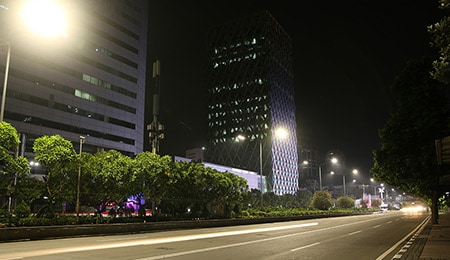by Jagan Srinivasan, Philips Lighting General Manager for Philippines | Manila Standard
MANILA, Philippines - Today, light is used in a number of different ways, with emphasis not only on its technical characteristics, but also on light’s relationship with a city and its population. As the landscape around lighting continues to evolve due to urbanization, so too will the role that light has to play in public spaces – from parks to roads, and sidewalks to public squares.
Indeed, we are already seeing this happen across many forward-thinking cities. One of the key trends to date has been a shift away from lighting for cars towards lighting for people and more than that, a shift away from just street-lighting specifically. Historically, public lighting has been synonymous with street-lighting, and its main function inadvertently defined as providing visibility for drivers. This resulted in a uniform approach to public lighting as the audience was simply defined as drivers. Now more than ever, we are seeing a trend towards accommodating the general public, including pedestrians and cyclists alongside drivers, which is delivering better lighting outcomes for the public and local governments than the former approach to lighting.
While it has yet to take off in the Philippines, the public sector is steadily taking note of the outcomes of digital lighting solutions. Major cities such as Manila, Pasig, San Juan, and Taguig have recognized the advantages of light-emitting diode (LED) usage, converting and installing new lampposts across the metro. Outside Metro Manila, new wave cities like Baguio, Cebu, and General Santos are working on upgrading their respective municipalities as well.
The benefits of digital lighting in public spaces
LED lighting delivers on CO2 emission reduction targets by up to 1400 million tons per year, by replacing a uniform approach to lighting with tailored technology that is fit for use and cuts unnecessary energy consumption.
LED allows for flexibility in lighting that has not previously existed. With a programmable lighting system, local governments are able to take advantage of smart lighting systems in the event of an emergency and be able to assist in its swift resolution.
Aside from sustainability and energy-efficiency, programmable lighting diversifies the community. In early applications, lighting has proven an ideal platform for systems and software that enable people to see, feel and function better, while allowing individual structures and entire cities to operate more efficiently and more sustainably than ever before.
In Practice
Philips Lighting recently implemented one of the world’s largest connected street lighting systems in Jakarta, Indonesia. The project, a significant milestone in Jakarta’s ongoing transformation into a smart city, involved upgrading nearly 90,000 street luminaries with energy efficient LED lights connected to a Philips CityTouch lighting management system. This initiative helps the city reduce energy expenses and improve public services while enabling citizens to live safely and comfortably.




